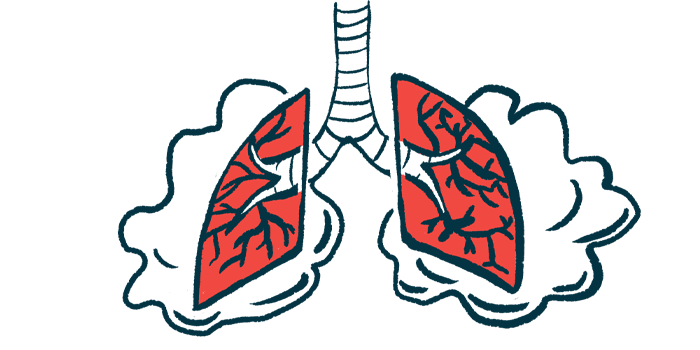Using patient’s own stem cells shows promise as IPF treatment
Therapy led to improvement in lung volume, small airway function in 3 patients

Basal stem cells taken from the upper part of a patient’s respiratory tract can be expanded in the lab and then transplanted back into their lungs to treat idiopathic pulmonary fibrosis (IPF), according to a recent study.
“Our clinical observations herein show that [basal cells] infusion is able to further prevent deterioration and reverse the declining trend of lung function parameters,” scientists wrote. “This is a preliminary indication that airway epithelial stem cell-based therapy has a great potential to reverse impaired pulmonary function of IPF.”
Their findings were detailed in the study “Epithelial stem cells from human small bronchi offer a potential for therapy of idiopathic pulmonary fibrosis,” which was published in eBioMedicine.
Stem cells give rise to different types of cells
Stem cells are able to give rise to different types of cells. Basal cells are a key type of lung stem cell that play an essential role in the ability of lung tissues to repair themselves and heal after injury, but studies have suggested that dysfunction in basal cells may play a role in IPF.
This study began with scientists in China conducting detailed analyses of cell activity in lungs collected from people living with IPF who had undergone a lung transplant. Using the removed lungs, the researchers noted some basal cells were showing signs of senescence, meaning they had lost their ability to divide and function properly, becoming generally inactive.
Specifically, results showed there was a lot of senescence in basal cells residing in distal airways — the deeper part of the respiratory tract that’s packed with small airways. Conversely, basal cells found in the upper part of the respiratory tract that contains larger air passageways, such as the bronchi, appeared remarkably healthy.
Based on these observations, the researchers reasoned it might be possible to treat IPF by taking healthy basal cells from the proximal parts of the lungs and placing them in the distal parts. In theory, this could provide damaged parts of the lungs with a fresh wave of healthy stem cells that would be able to promote lung healing.
The researchers then conducted a detailed series of tests showing it was possible to take proximal basal cells and expand them in a laboratory, enabling the creation of a large number of healthy basal cells.
“Pioneeringly, we isolated and propagated non-senescent [basal cells] … from small bronchi, and the following up cultures exhibited comparable airway stem cell function compared to healthy counterparts, notably in terms of self-renew capacity and lineage commitment,” the scientists wrote.
The researchers then transplanted patient-derived proximal basal cells into the lungs of mice with induced IPF to assess their therapeutic potential. They found that cells were able to repair damaged areas and even promote the growth of new, healthy lung tissue. Mice given this stem cell treatment also showed improvements in lung function, and tended to lose less weight and live longer than their untreated counterparts.
Small trial included 3 people with advanced IPF
Having shown proof-of-concept in preclinical models, the researchers conducted a small trial (ChiCTR2000036648) where this approach was used to treat three people with advanced IPF. In each case, proximal basal cells were collected, grown, and then infused back into the patients as an autologous treatment (a treatment using cells from the person being treated).
Six months after treatment, all three participants had experienced significant improvements in lung function.
“Autologous [basal cell] transplantation in IPF patients showed a significant clinical efficacy, especially improvement in lung volume and small airway function,” the scientists wrote. “Collectively, our findings provided strong evidence that [basal cell] infusion played critical roles in modulating, and potentially reversing, the impaired function of small airway in IPF. This highlights their potential as a compelling therapeutic avenue for IPF management.”
The team stressed, however, that the present study was very small and the follow-up wasn’t very long, thus additional studies will be needed to evaluate if this approach is consistently effective and safe for IPF patients.
“It is our hope that this work will encourage further investigation and facilitate the recruitment of a larger eligible patient population in subsequent studies to validate and expand upon our results,” the researchers wrote.









